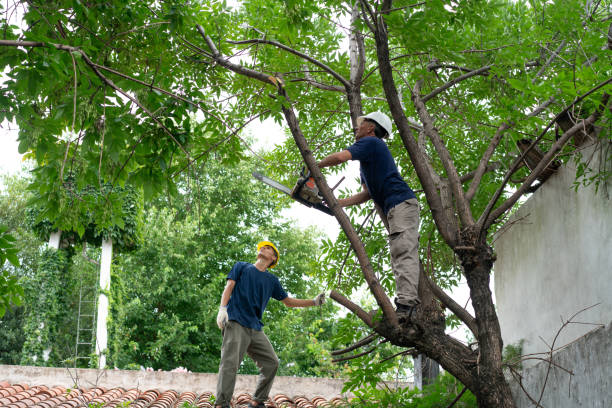Trees have unique rhythms and growth patterns, significantly influencing their trimming needs.
Recognizing these patterns goes beyond simply choosing the right time to pick up your shears; it’s about optimizing the tree’s health and appearance.
Each species exhibits distinct characteristics, and timing your trimming can substantially affect outcomes.
For instance, pruning during a tree’s dormant phase can promote better recovery and encourage robust growth.
But this is just the beginning.
How can you synchronize your pruning practices with these natural cycles to maximize the benefits for the trees you tend?
Let’s delve deeper into the art of tree trimming and discover how to nurture your green companions effectively.
(H2) Key Tree Growth Stages
Tree growth stages are fascinating, revealing how these towering organisms evolve.
Understanding these stages provides valuable insight into a tree’s lifecycle, which is essential for its care.
(H3) Seed Stage
- Trees begin their journey as seeds, which germinate into seedlings.
- They are most vulnerable at this stage and need protection from harsh weather and pests.
- Seedlings focus on developing strong roots and sturdy stems to support future growth.
(H3) Sapling Stage
- As trees transition into the sapling stage, they experience rapid growth.
- You’ll notice a significant increase in height and the development of branches and leaves.
- During this phase, trees establish their identity, adapting to their environment and competing for sunlight.
(H3) Adult Stage
- Once trees mature, they enter the adult stage, where growth slows.
- At this point, they focus more on reproduction, producing flowers and seeds to ensure the continuation of their species.
- Mature trees provide shade, habitats, and numerous ecological benefits, playing a vital role in their ecosystem.
By understanding these growth stages, you can better care for trees and appreciate their importance in our environment.
(H2) Seasonal Trimming Strategies
Understanding trees’ growth stages lays the foundation for their care, particularly trimming.
Seasonal trimming strategies are vital for maintaining healthy trees.
You can enhance the tree’s vitality and structure by trimming with natural growth cycles.
(H3) Ideal Timing for Trimming
Late Winter
For most deciduous trees, late winter is the optimal time for trimming.
During this dormant period, trees are less stressed, and sap loss is minimal.
This timing also provides a clear view of the tree’s structure, making identifying and removing problematic branches easier.
Spring
Spring trimming is generally not recommended, as trees are actively growing.
However, if necessary, you can perform light pruning to remove dead or damaged branches without significantly impacting the tree’s health.
Late Summer or Early Fall
Trimming during late summer or early fall can be beneficial for controlling growth and strengthening branch structures before the dormant season.
This practice helps prepare trees for the challenges of winter.
(H3) Special Considerations for Evergreens
- Evergreens
These trees typically require less frequent trimming.
Light pruning in early spring or late summer is usually sufficient to maintain their shape and health.
(H3) Aligning Practices with Seasonal Changes
Each season offers unique advantages and challenges for tree care.
By aligning your trimming practices with the seasons, you ensure your trees can thrive throughout the year, ultimately leading to healthier and more resilient growth.
(H2) Species-Specific Pruning Techniques
Pruning techniques can vary significantly depending on the species of tree you’re dealing with.
Each tree species has unique growth habits and structural needs, making it essential to understand these differences for effective pruning.
(H3) Pruning Techniques for Different Tree Types
- Fruit Trees (e.g., Apples and Pears)
These trees benefit from “open center pruning,” which maximizes sunlight penetration and air circulation.
This technique is crucial for enhancing fruit production and preventing diseases.
- Conifers (e.g., Pines and Spruces)
Focus on maintaining their natural shape by cutting back to the nearest lateral branch.
Avoid cutting into the main leader, disrupting their vertical growth pattern and leading to undesirable shapes.
- Flowering Trees (e.g., Cherry and Dogwood)
Prune these trees immediately after they bloom to avoid cutting off next year’s flower buds.
This timing ensures a beautiful display of flowers in the following season.
- Evergreens (e.g., Holly and Boxwood)
Use light trimming to maintain their shape rather than making heavy cuts.
Over-pruning can lead to unsightly gaps, so exercise caution during trimming.
(H3) Importance of Research and Consultation
Make sure to research the specific needs of each tree species in your landscape.
Timing and technique can significantly impact the health and aesthetics of your trees.
Don’t hesitate to consult resources or professionals if you’re unsure about the best practices.
Tailoring your approach ensures your trees thrive beautifully, enhancing your landscape’s overall appeal.
Understanding tree growth patterns and employing effective trimming strategies is vital for the health and beauty of your trees.
By aligning your pruning practices with the natural growth cycles, you can foster stronger, healthier trees that enrich your environment.
Consider each species’ unique needs and timing’s importance in your trimming efforts.
With the right knowledge and care, you can ensure your trees survive and thrive, creating a vibrant and inviting landscape.

